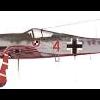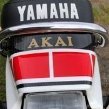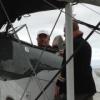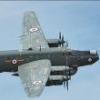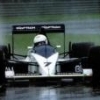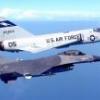-
Posts
377 -
Joined
-
Last visited
-
Days Won
1
richdlc last won the day on November 6 2013
richdlc had the most liked content!
About richdlc
- Birthday 16/09/1977
Profile Information
-
Gender
Male
-
Location
(The Depths of) Hull, UK
richdlc's Achievements

Established Member (3/9)
236
Reputation
-

1/18 French SBD-5 Dauntless Indochina 1947
richdlc replied to richdlc's topic in Ready for Inspection - Aircraft
thanks very much guys, appreciate the comments :-) -

1/18 French SBD-5 Dauntless Indochina 1947
richdlc replied to richdlc's topic in Ready for Inspection - Aircraft
many thanks guys.. :-) -

1/18 French SBD-5 Dauntless Indochina 1947
richdlc replied to richdlc's topic in Ready for Inspection - Aircraft
thank you very much. I was a little concerned I'd overdone it but it matches u to my reference pics cheers..my photos are not great as I just used my iphone, but the best I could do! thank you Adrian, very kind cheers! The most time consuming and tedious part, probably many thanks Dave :-) yes I'm pleased with the end result! I did mate, many thanks, they were a big improvement cheers Pete thank you! haha thank you, might inspire them to take u the hobby? thank you Pete. This is a well documented and well known machine, and I put my own slant on it cheers Russ, shame I can't convey the sheer size and presence in photos -

1/18 French SBD-5 Dauntless Indochina 1947
richdlc replied to richdlc's topic in Ready for Inspection - Aircraft
thanks guys yes I was always in two minds about the weathering throughout the build, but it looks 'worse' than it is in close up photos... but you are right, these machines were at the end of their service life and heavily weathered. -

1/18 French SBD-5 Dauntless Indochina 1947
richdlc posted a topic in Ready for Inspection - Aircraft
total construction time just under two years. From Merit SBD-3/4 kit with extensive modifications. New windshield, scratchbuilt flaps and actuating mechanism, scratchbuilt interior, twin 0.30 cals, engine, engine accessory compartment, bomb racks and fuselage interior. Skinned with pewter sheet.- 36 replies
-
- 43
-

-

1/18 French SBD-5 Dauntless UPDATE 18/11/16 FINISHED!
richdlc replied to richdlc's topic in Work in Progress - Aircraft
*update 18/11/16* Hi guys as you will no doubt be aware by now, the Dauntless was finished a few weeks ago in time for Telford. I'll now update the build thread to show you how I got to that stage... the canopies are good, albeit way too thick. To correct this issue it's really necessary to replace them. However, due to time (and talent) constraints I decided to work with what I had and detail them. Various accoutrements, locking handles and emergency release handles etc. were added: I decided to have a full bomb load 'for display purposes' - I'm well aware of the age old argument as to whether ordnance is mounted with panels open. Some say yes, some say no. I thought it would be a shame not to have the aircraft bombed up. First of all I scratched the outer bomb pylons as the kit ones are rubbish. Here's the right hand one (with strike camera): and both of them - the bombs were also dressed up with new fins, fuses and fuse wires: Main bomb and its distinctive cradle: The main wheels are those horrible rubber efforts that some kits come with. I had them replaced with 3D-printed ones: The propeller is the wrong type for this machine. Although a Hamilton pro, it represents an earlier incarnation, with the large counterweights around it. I widened the tips, and created a new prop boss After that it was simply a matter of painting....a lot of painting. I used Colourcoats enamels for the tri-colour scheme, which are the most accurate paints on the market. The French machines retained the U.S.N. glossy sea blue / intermediate blue / non-specular white scheme in Indochina. I ended up with this: All national / unit markings were deliberately hand-painted for an authentic look. there are plenty of other things that I didn't have time to photo-document, for example the windshield, but you can see them in the 'ready for inspection' forum The model took a 'commended' at the IPMS UK Nationals in Telford last week Many thanks for following my build over the past two years. Needless to say I never want to see another Dauntless again. I hope to be able to enter it in more competitions in coming years, and to have more people see it in person, because it's hard to appreciate the sheer size of this beast! regards Rich -

1/18 French SBD-5 Dauntless UPDATE 18/11/16 FINISHED!
richdlc replied to richdlc's topic in Work in Progress - Aircraft
many thanks guys. It's a very slow, but rewarding process. A few more months should see me over the finish line. In time for Telford? It's 50/50 at the moment... -

1/18 French SBD-5 Dauntless UPDATE 18/11/16 FINISHED!
richdlc replied to richdlc's topic in Work in Progress - Aircraft
cheers mate -

1/18 French SBD-5 Dauntless UPDATE 18/11/16 FINISHED!
richdlc replied to richdlc's topic in Work in Progress - Aircraft
*update 30/6/16* Hi everyone I’ve been hard at work over the last few weeks. Last time I showed you how I made the actuating mechanism for the wing dive brakes. This time around, it’s all about metal skinning. A major shortcoming of the kit is the fact that every rivet is recessed (this being basically a scale up / rip off of the old Accurate Miniatures 1/48 kit). You can get away with it in 1/48 - not so 1/18. Every panel was measured, riveted and cut from pewter sheet. Some were easier than others. I had to bear in mind at all times later stages in the construction - for example, the wings won’t be attached to the fuselage for some time, but I still had to make all the relevant panels ready to attach. Here are a few photos showing where I am up to - around 90% of the body is either metallized, or has panels ready to attach later: I’ve also been working on all the flaps, ailerons and moving surfaces…some pics: for the fabric surfaces, I thought long and hard about trying to replicate the excellent results achieved by Peter (Airscale) on his 1/18 Spitfire build using scratchbuilt frameworks covered in Solartex. In the end I decided I just don’t have the time (or frankly, the skill and inclination) to try that with this build. It’s already nearly 18 months in and I’m impatient! In the end I tried a different technique. I put a grinding bit in my dremel and let it ‘dance’ over the fabric surfaces on the flaps - this left random little nicks and gouges across the surface of the parts. After I’d polished them up using a polishing wheel (again in the dremel) the flaps had a high gloss shine, the harshest edges of the indentations were nicely burred out and it looked kind of cool. Time will tell if it has worked or not. Without the benefit of an undercoat, the effect kind of looks like wood grain as opposed to canvas…..but we’ll have to wait and see. Check it out: The plane is now slowly approaching the stage where I can attach the wings to the fuselage. However, before that happens I must first scratchbuild the actuating mechanism for the central dive brake…. and tackle the cockpit transparencies. For now though, here’s a mock up - as it is difficult to convey the sheer size, I roped in a rather handsome model to hold the plane for the cameras. One other thing I can’t really convey is the weight of this beast - which is going up considerably the more metal I add! more soon, but possibly not for several more weeks Rich -

1/18 French SBD-5 Dauntless UPDATE 18/11/16 FINISHED!
richdlc replied to richdlc's topic in Work in Progress - Aircraft
thanks for checking in -

1/18 French SBD-5 Dauntless UPDATE 18/11/16 FINISHED!
richdlc replied to richdlc's topic in Work in Progress - Aircraft
thanks very much Guy thanks for the heads up...this will actually be a French machine circa 1948 / Indochina. From what I've seen the colour scheme didn't change from the one used by the previous owners (i.e. the USN). I might have to do some more research into the colour of the centre dive flap though -

1/18 French SBD-5 Dauntless UPDATE 18/11/16 FINISHED!
richdlc replied to richdlc's topic in Work in Progress - Aircraft
many thanks guys! It did test my patience at times but it's a rewarding exercise when all is said and done.. ask me how I feel after doing the other side and the centre one though -

1/18 French SBD-5 Dauntless UPDATE 18/11/16 FINISHED!
richdlc replied to richdlc's topic in Work in Progress - Aircraft
This end (the end closest to the fuselage) is subtly different as the entire mechanism joins onto the mechanism for the under-fuselage dive flap Observe the left hand side of the bottom flap in the last photo - notice the notch cut out of its edge. Unfortunately this isn’t strictly accurate - a mistake during the design process meant that the bottom flaps were made as simple copies of the top ones. The top ones DO have a notch cut out of the edge closest to the fuselage, but the bottom ones do not, as you can just about ascertain from this photo: I’m not too bothered by this. Eagle-eyed viewers (and no doubt real Dauntless owners and pilots) will probably pull me up on it, but TBH it would take longer to fix it than not. And that’s the least of my problems! This one flap has probably taken 30 hours to make, and I have the other one to do, plus the center flap! Until next time, any feedback and comments / queries welcomed. Rich -

1/18 French SBD-5 Dauntless UPDATE 18/11/16 FINISHED!
richdlc replied to richdlc's topic in Work in Progress - Aircraft
**update 17/4/16** Hi everyone - I feel it is time for one of my periodic updates, so here goes… In recent weeks I have been concentrating almost exclusively on the dive brakes. These are a very distinctive feature of the SBD, and as they are painted bright red, provide a welcome splash of colour. You may recall that I got mine custom made in brass, at great expense. Although generally I avoid brass as I don’t like working with it (and feel that it offeres limited detailing possibilities as everything is flat), in this case I don’t think that I could have made the main flaps in any other way - at least not to the same standard and consistency. There are dozens of holes in the dive flaps that need to be exactly the same size - a difficult proposition if scratchbuilding the entire thing.. I started by making the outer flaps. The first step was to glue everything together and add some rudimentary details in the form of strengthening spars from plastic strip of the appropriate diameter. I mentioned earlier how I cut out the dive flap sections from the wings to make it easier to build them, and I’m glad I did as they require constant handling. The kit parts are designed to be moveable - the plastic parts are held in place by little brass flanges hidden within the wing halves, and these are in turn held in place by screws. I modified the aforementioned brass flanges and screwed them in place, then reinforced them with the strongest two-part epoxy I could find. Onto the flanges I then soldered the dive flaps. Believe me, I hated every minute! I’m rubbish at soldering, but eventually even my ham-fisted attempts produced a strong enough join. This means that the dive flaps are now held open at the correct angle. The soldered joins take the weight. Once I add the opening/closing mechanism, there will be some additional strength. It’s not rock-solid, but anything less than a direct hit on the dive flaps shouldn’t do any lasting damage… Unfortunately I was now left with an unsightly mess, so….I cheated and covered up all evidence of soldering with plastic rod, pewter sheet etc. This does mean that things are slightly overscale, and that if scaled up to real life size the whole mechanism would be fouled by the oversize framing, but that’s not really a major issue for me. I had to compromise and I think the result looks OK. Now for some photos of the real thing - they should show the complexity of the main feature of the dive flaps, which is the actuating mechanism: Each flap has six actuating arms arranged in equal spacing along a couple of tubes. I gradually made mine from plastic sheet, strip and rod, plus some resin nuts and bolts, adding layers of detail. There is a little artistic licence here and there. I would estimate that each actuating system, plus associated flaps have over 200 pieces in them. Everything was done in batches of 6, repeated ad nauseum… In place on the right hand dive flap - the final ends of the actuating arms can only be cut to shape and added once the assembly is glued into place… -

1:24 scale AEC Matador 0854 with Coles Crane
richdlc replied to Ripaman's topic in Work in Progress - Armour
glad you are still going with this one! I'm sorry I was never able to get over and photograph that real one I mentioned all those months ago for you :-( But unless they actually own one and spot any errors, I think the casual observer will still think it looks amazing!!


